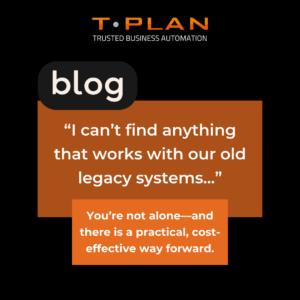In the automation industry, the lines between different technologies can sometimes become blurred. In this blog we’ll look at one of the most common misconceptions that Robotic Process Automation (RPA) and Test Automation are interchangeable. However, while both involve automation, their purposes, functions, and implementations are fundamentally different. More importantly, RPA cannot and should not replace test automation.
What is RPA?
Robotic Process Automation (RPA) is designed to automate repetitive, rule-based business processes that typically require human intervention. It mimics human actions within an application, following predefined workflows to complete tasks such as data entry, invoice processing, and customer service interactions.
Key characteristics of RPA:
- Operates within production environments
- Focuses on business process automation
- Works with structured, repetitive tasks
- Typically interacts with user interfaces in the same way a human would
What is Test Automation?
Test Automation, on the other hand, is the process of using software tools to execute tests on applications to ensure quality, functionality, and reliability. Unlike RPA, it is designed to validate that software behaves as expected by detecting defects, performance issues, and inconsistencies before deployment.
Key characteristics of Test Automation:
- Focuses on software validation and quality assurance
- Operates in development and testing environments
- Tests edge cases, performance, and functionality
- Ensures applications work correctly before release
- Why RPA Can’t Replace Test Automation
Despite some similarities in how they operate at the user interface level, RPA and test automation serve completely different purposes.
Here’s why RPA is not a substitute for test automation:
1. RPA is Built for Stability, Testing is Built for Change
RPA bots are designed to execute fixed, predictable workflows within a stable production environment. They work best when applications remain unchanged. In contrast, test automation is built to handle software updates, validate changes, and identify defects before an application reaches production.
2. RPA Doesn’t Test Edge Cases
A good test automation strategy considers various test scenarios, including edge cases, unexpected user inputs, and performance under stress. RPA simply executes predefined tasks and does not test how an application behaves under different conditions.
3. RPA Does Not Identify Defects
Test automation tools, such as T-Plan Robot, are designed to detect functional, performance, and UI issues. RPA assumes that an application works correctly—it does not verify behavior, performance, or security vulnerabilities.
4. “RPA Testing” is Part of the Deliverable Before Production Readiness.
Some believe that “RPA testing” exists—when in reality, what they mean is testing the RPA workflows themselves. The RPA need to be validated, but this is not the same as software test automation. Testing RPA simply ensures that it follows a process correctly; it does not verify software functionality, usability, or performance.
T-Plan: The Best of Both Worlds
At T-Plan, we recognise the importance of both RPA and Test Automation. That’s why we offer solutions for both process automation and software testing—giving businesses the flexibility to choose the right tool for the right job.
T-Plan Robot for Test Automation
T-Plan Robot is designed to provide a human-like approach to software testing at the GUI level, ensuring that applications function correctly across multiple platforms, devices, and environments.
Key Benefits:
- Cross-Platform Testing: Works on Windows, Mac, Linux, Unix, iOS, and Android.
- Technology Agnostic: Automates applications built in Java, JavaScript, Python, C#, .NET, and any web or desktop environment.
- Image-Based Testing: Uses advanced OCR and visual recognition to test applications just as a human would.
- Low-Code / No-Code Automation: Simple scripting options, including Record & Replay, allow teams to automate without deep coding knowledge.
- Unmatched Flexibility: Unlike RPA tools, T-Plan Robot is built for continuous testing and quality assurance, ensuring that applications remain reliable across updates and changes.
T-Plan for RPA
In addition to test automation, T-Plan also offers RPA solutions, allowing businesses to automate repetitive workflows while maintaining accuracy and efficiency.
Why Choose T-Plan for RPA?
- Flexible Automation: Automate processes across different applications and platforms.
- Secure Execution: Ensures compliance with security and regulatory requirements.
- Cost-Effective: A single solution for both RPA and Test Automation, reducing overall costs.
Read more on the benefits of T-Plan here.
Conclusion
RPA and Test Automation may seem similar at first glance, but they serve entirely different purposes. RPA is for business process automation, while test automation ensures software quality before deployment. RPA bots assume an application works, whereas test automation actively validates that it does.
With T-Plan, businesses don’t have to choose between RPA and test automation—we provide both, ensuring you have the right tool for your specific needs.
To learn more about T-Plan Robot and how it can support your test automation and RPA strategy, contact us today for a free demo.
Contact Us


